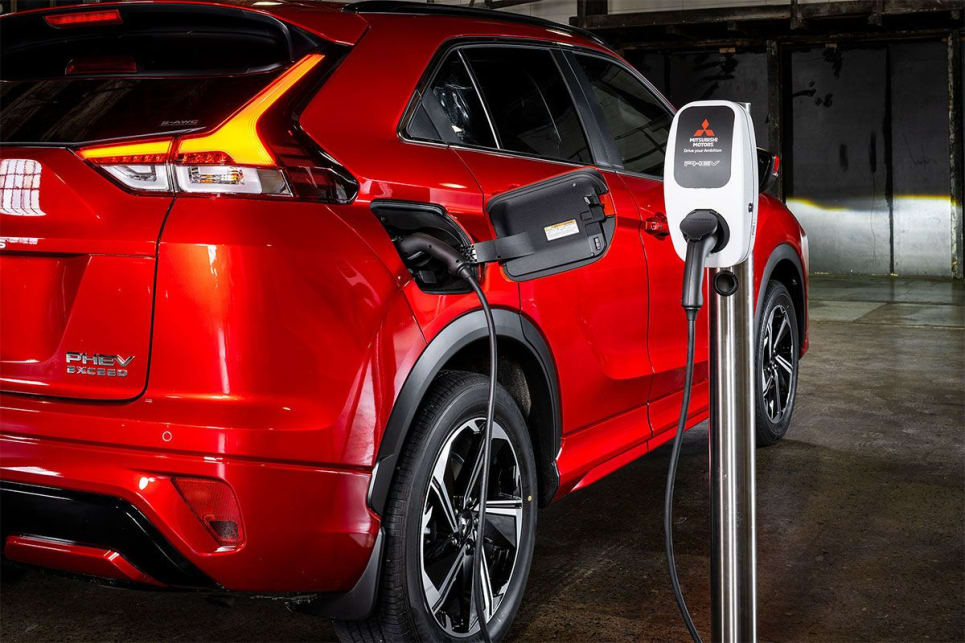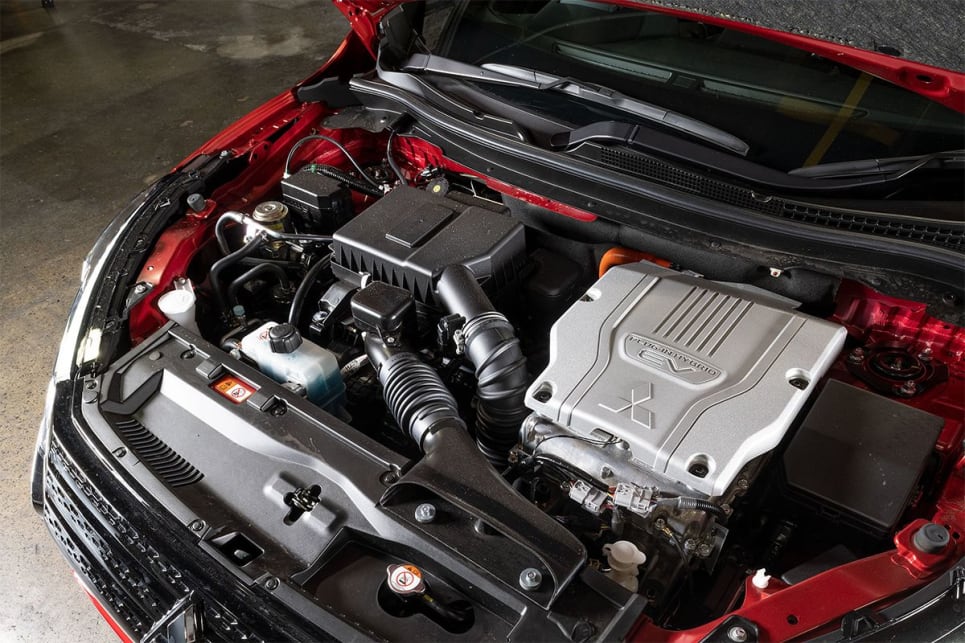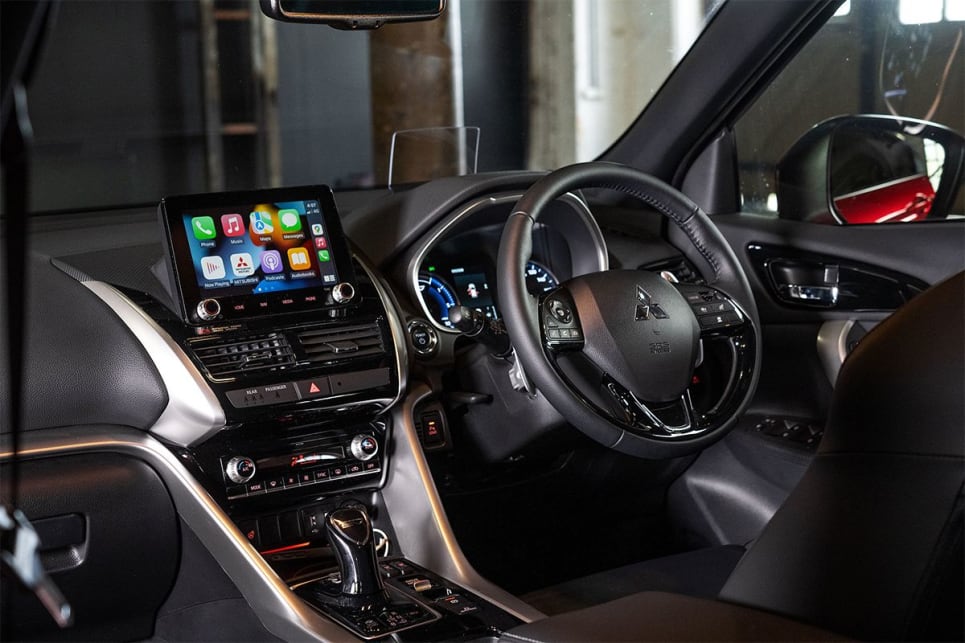Of all the things to love about the cutting-edge technology used in the Mitsubishi Eclipse Cross plug-in hybrid electric vehicle— from the reduction in tailpipe emissions to the near-silent electric motor that delivers instant torque — the one to celebrate the most may be the wonderful prospect of a fuel bill that adds up to a neat and simple zero.
With nearly one kilowatt of panels for every single resident, Australia has the most solar per capita of any country on the planet — and some of the best solar-energy resources — a fact that puts Australians in the enviable position of having the world’s best access to solar-powered EV charging.
It’s a fact not lost on Tim Clarke, the Product Strategy Manager for Mitsubishi Motors Australia — the car company that introduced the first ever plug-in hybrid SUV to the world, the Mitsubishi Outlander.
"It’s not crucial to have a dedicated EV charger at your home, but it’s certainly beneficial if you do, especially if you’re running solar," says Clarke. "You can tap into that free, renewable energy by utilising smart-charging features available on most chargers, and the advantage is that it allows you to really take advantage of that zero-cost energy in solar."
For those who don’t know the difference between a hybrid, plug-in hybrid, and an EV, the answer is pleasingly easy to get your head around.
"A hybrid is a vehicle that essentially has two powertrains on board: a petrol-powered internal-combustion engine, and an electric motor that’s powered by a battery that charges itself via regenerative braking, with the two working in tandem to power the vehicle," says Clarke.
"A battery-electric vehicle only has one onboard powertrain, and that's purely electric. It has a large onboard battery, which can be charged externally from the grid via a powerpoint or dedicated charger.
"A plug-in hybrid is really combining the best of both these vehicle types. On one hand, it can operate as a pure EV via external charging of its onboard battery, and then on the other hand, it can operate as a hybrid vehicle where it uses its onboard petrol motor to run as a generator for the battery or to drive the front wheels directly."

Considering electrified vehicles have really only become a major talking point in Australia over the past couple of years, it might come as a surprise to learn that Mitsubishi’s Outlander plug-in hybrid electric vehicle made its debut in Australia eight years ago.
It was a pioneering vehicle for a pioneering brand, and it has not only given Mitsubishi a wealth of experience and expertise in the electrified-vehicle space, but also crystallised the brand’s vision for the future, all of which comes down to a single word: sustainability.
"We can all see the concerns around climate globally, and that transport forms a significant part of global CO2 emissions, which are contributing to climate change," says Clarke.
"If we look at how we, as individuals, can reduce our transport carbon emissions, transitioning to electric and plug-in hybrid electric vehicles charged with renewable energy is one major way we can contribute right now."

With Australia’s vast landscape and long-distance travel, plug-in hybrid electric vehicles are the ideal transitional technology for the journey toward an electric future. Not just perfect for this country, then, but perfect for right now, too.
"Plug-in hybrid electric vehicles offer an immediate solution for Australian drivers who are struggling with the choice between a conventional vehicle and an electric vehicle," says Clarke. "They offer the benefits of electric mobility but without the infrastructure needs or range limitations.
"A plug-in hybrid allows day-to-day, short-range pure-electric driving, and then, for longer distances, the hybrid-electric modes take over, combining the petrol motor with electric drive for fuel-efficient touring.
"We have no doubt that we will reach a point in time where charging infrastructure covers the entirety of Australia, so you can drive anywhere you want to in an electric vehicle, but for right now, as we're in the infancy of this transition, plug-in hybrids really provide a solution to all of those infrastructure challenges.
"For people who want to get into an electric vehicle, but are apprehensive due to charging infrastructure, a plug-in hybrid really does provide a solution to allow you to get into electric motoring without those concerns."

Mitsubishi’s latest and most advanced plug-in hybrid, the Eclipse Cross, is a perfect example of how the technology can be the best fit for Australian drivers.
The Eclipse Cross plug-in hybrid EV will deliver around 55 kilometres of all-electric driving, using its 13.8kWh on-board battery, making it perfect for almost all daily commutes, with owners needing only to plug in at home to ensure their working week is emissions free.
"The battery is charged externally, and typically you'd do this overnight in your garage, so that you've got a full battery ready to go for the next day," Clarke says.
"If you need to do a journey that's longer than that EV-only range, you also have an on-board petrol tank and engine.

"The Eclipse Cross plug-in hybrid EV is special for us because it's the second vehicle that we've offered with a plug-in hybrid powertrain, the first being the Outlander, which was really the pioneer in the space. So for us to be able to leverage that experience and knowledge and apply that to a new vehicle is really exciting for us."
With a global push toward electrified vehicles, Clarke says Mitsubishi is excited about what our green-motoring future holds.
"There's excitement around this change, and it's a big change," he says. "We see it across the automotive industry globally, and some might compare it to being as big a change as the horse and cart was to the automobile back in the early 1900s.

"This change to electric mobility is really shifting the way people think, and at Mitsubishi it's a big period of change and transition.
"During that transition from traditional internal-combustion-engined vehicle to electric vehicle, it makes sense for Mitsubishi to offer Australians a journey from petrol to plug-in hybrid to, eventually, an all-electric future."








Comments